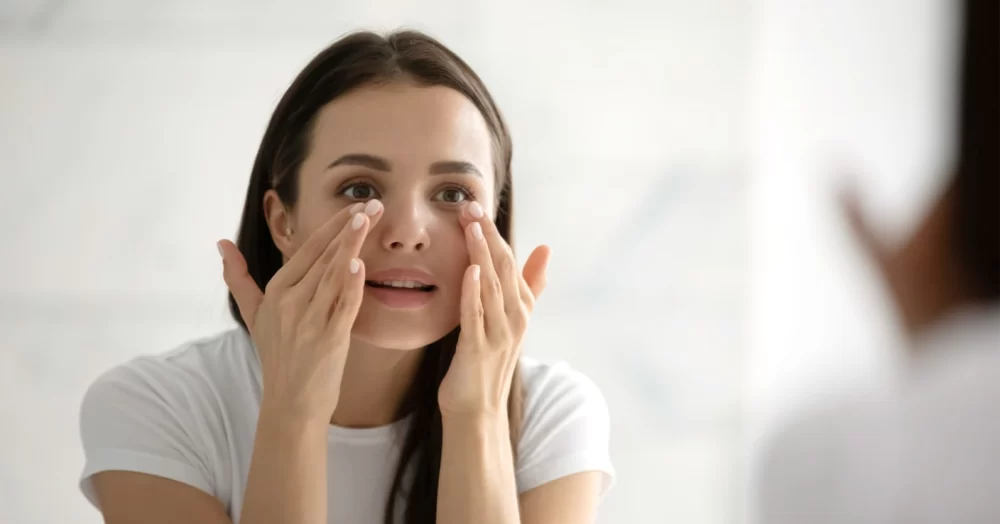
- 1-Causes-Eye-Irritation-Contact-Lens-Overuse
- 2-Symptoms-And-Identification-Eye-Irritation
- 3-Effective-Treatment-Methods-For-Eye-Irritation
- 4-Preventive-Measures-To-Avoid-Contact-Lens-Overuse
- 5-When-To-See-An-Eye-Care-Professional
1. Understanding the Causes of Eye Irritation from Contact Lens Overuse
Eye irritation from contact lens overuse is a common issue that many lens wearers face, often caused by prolonged wear beyond the recommended time or improper lens care. When contact lenses stay on the eyes longer than advised, they can reduce oxygen supply to the cornea, leading to dryness, redness, and inflammation. Additionally, debris accumulation, protein deposits, or using lenses in environments with dry air can exacerbate discomfort. It’s essential to recognize that even high-quality lenses can cause irritation if not used responsibly.
Consider Sarah’s experience: a graphic designer who wore her lenses for over 12 hours daily, including overnight use. She began to notice persistent redness and a gritty feeling in her eyes, signs that should not be ignored. Her story is not unique but highlights how overuse without breaks can trigger serious irritation.
1.1 The Role of Oxygen Deprivation
The cornea relies on oxygen from the air, but contact lenses create a barrier that limits oxygen flow. Overusing lenses intensifies this effect, leading to corneal hypoxia, which manifests as irritation and can impair vision if untreated.
1.2 Impact of Lens Hygiene and Environment
Poor cleaning routines and exposure to pollutants or dry conditions can increase irritation risks. Wearing lenses during swimming or in dusty environments without proper protection further contributes to eye discomfort.
2. Recognizing Symptoms of Eye Irritation Caused by Contact Lens Overuse
Understanding symptoms early can prevent more serious eye problems. Common signs include redness, burning sensation, excessive tearing, blurred vision, and a feeling of a foreign body in the eye. If these symptoms persist, it often indicates that the eye’s natural balance has been disturbed by lens overuse.
Mark, a college student, ignored his dry eyes and blurry vision, thinking it was just fatigue. However, his symptoms worsened until he sought professional help. This emphasizes the importance of paying attention to subtle discomfort signs.
2.1 Mild vs. Severe Symptoms
Mild irritation might resolve with simple rest, but severe symptoms like sharp pain or sudden vision loss require immediate attention. Understanding these differences can guide wearers to act promptly.
2.2 Differentiating Allergic Reactions
Sometimes, eye irritation overlaps with allergic responses to lens solutions or environmental allergens. Identifying the root cause ensures the right treatment path.
3. Practical and Effective Ways to Treat Eye Irritation from Contact Lens Overuse
Once symptoms are identified, appropriate treatment is crucial. First and foremost, removing the lenses to allow the eyes to breathe is necessary. Using lubricating eye drops specifically designed for contact lens users can relieve dryness and soothe irritation. However, not all eye drops are suitable—choosing preservative-free formulations is safer to avoid further irritation.
Rest is essential; reducing lens wearing time and allowing the eyes several hours of break daily helps recovery. In cases of inflammation, cold compresses can provide additional relief.
3.1 The Role of Artificial Tears and Eye Drops
Artificial tears mimic natural tears, replenishing moisture and protecting the corneal surface. Eye Docs offers a range of trusted lubricants and cleaning solutions tailored for sensitive eyes, making it easier to manage discomfort.
3.2 When Medication is Needed
If irritation is due to infection or severe inflammation, an eye care professional may prescribe antibiotic or anti-inflammatory drops. Self-medicating can worsen conditions, so professional guidance is key.
3.3 Real-World Case: Recovery Through Proper Care
Emily, an avid contact lens wearer, developed chronic irritation. After consulting with specialists at Eye Docs, she adopted a new cleaning regimen and switched to daily disposable lenses. Within weeks, her symptoms subsided, showcasing the importance of expert advice and proper product selection.
4. Steps to Prevent Eye Irritation from Contact Lens Overuse
Prevention is better than cure. Adhering strictly to recommended wearing times, maintaining rigorous hygiene, and avoiding sleeping in lenses can significantly reduce irritation risks. Regularly replacing lenses as prescribed and using high-quality lens solutions protect eye health.
4.1 Educating Yourself on Lens Care
Understanding the correct way to insert, remove, and clean lenses builds a habit that prevents overuse. Setting reminders to remove lenses at the right time can also be helpful.
4.2 Environmental and Lifestyle Adjustments
Keeping eyes hydrated by blinking frequently, using humidifiers in dry settings, and wearing sunglasses outdoors minimize irritation triggers.
4.3 Reliable Resources for Lens Wearers
Websites like Eye Docs provide up-to-date information and recommendations for lens care products, empowering users to make informed decisions.
5. Knowing When to Seek Professional Eye Care
Persistent irritation, worsening vision, or signs of infection such as discharge and swelling warrant immediate consultation with an eye care specialist. Early diagnosis prevents complications like corneal ulcers or long-term damage.
Even for minor discomfort, periodic check-ups are beneficial to ensure eye health and update prescriptions if needed.
5.1 What to Expect During a Professional Examination
Eye care professionals conduct detailed assessments including corneal health checks and lens fitting reviews to tailor treatment or recommend alternatives.
5.2 Trusted Assistance and Support
Eye Docs offers expert consultations and personalized lens care solutions designed to reduce irritation and improve comfort for all lens wearers.








